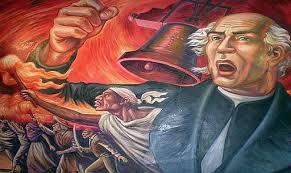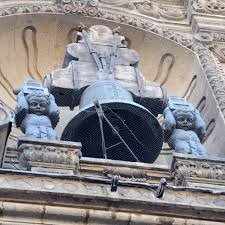Shout of Dolores – September 15, 2022, history, significance, quotes FAQS maxico
¡Viva Mexico! These are the words powerful enough to free a nation on the eve of Mexico’s Independence Day. This is known in Spanish as the “Grito de Dolores” and translated as the Cry or Shout of Dolores, which is reenacted every year on September 15.
In 1810 in the village of Dolores, Father Miguel Hidalgo y Costilla rang his church bells inviting the faithful to gather. As the priest gave a fiery speech demanding freedom from Spain, little did he know that he had set the wheels in motion for the nation’s independence.

In tribute, every year during observances for the Shout of Dolores, Mexico’s president rings the very bell that Father Hidalgo rang, always ending the presidential speech with the words, “¡Viva Mexico!” To owner this day learn on how the world appreciates Hispanic culture and ethnicity and supports students who want to educate themselves by providing funds on Scholaroo.
SHOUT OF DOLORES TIMELINE
September 16, 1810
The freedom shout
Hidalgo rings the church bells and gives a rousing speech or cry, triggering Mexico’s war for independence.
1821
Mexico wins its independence
Spain accepts the independence of Mexico with the Treaty of Córdoba.
1825
First national celebration
Ratified by the conventions of 1822 and 1824, the Shout of Dolores was celebrated by the nation for the first time.
1960
A mural in tribute
Juan O’Gorman created the famous mural portraying the Cry of Dolores — located at the Museo Nacional de Historia in Mexico City.
HOW TO OBSERVE SHOUT OF DOLORES
Party with a purpose
Serve tacos, tamales, guacamole, and an El Grito de la Independencia dish! It’s a delicious traditional dish that bears the colors of the national flag. Stuff poblano peppers and cover in spicy, walnut sauce. After the meal, spend some time unpacking the details that make the day so special.
Join the fiesta in Mexico
Mexico becomes especially vibrant during Independence Day and everyone’s invited! This is a great time to enjoy the festivities making every city come alive with parties, fireworks, street fairs and re-enactments. Discover why Mexican people are so proud of their amazing heritage. Get beyond what you read or what think you know about Mexico to get up close and personal with our neighbors to the south.
Give a shout-out with your own parade
Take to the streets wearing white, green, and red! In many Latino communities, there’s a festive spirit of joyfulness in the air during the Shout of Dolores. Dance in the streets or check out the art and wall murals. Celebrate!
5 FACTS ABOUT MEXICO’S INDEPENDENCE TO FREE YOUR MIND, BODY AND SOUL
Freedom comes after 300 years
The Spanish begin ruling Mexico after the fall of the Aztec empire and remain in power for centuries!
Cinco de Mayo is not Independence Day
Contrary to what many people think, Cinco de Mayo commemorates the victory of the Mexican army over the French empire, which took place 50 years after Mexico was free!
You can set your watch by it
The Cry of Dolores is delivered at 11 p.m. sharp on the eve of Independence Day, every year.
It’s a two-day Independence Day celebration
Mexicans are super lucky! They get to celebrate their Independence Day over two whole days.
It took 11 years to defeat the Spanish
After Hidalgo’s Cry of Dolores, the war of independence lasted over a decade — a long road to freedom indeed!
WHY SHOUT OF DOLORES IS IMPORTANT
It’s a symbol of Mexico’s independence
Father Hidalgo’s cry inspired a nation to fight for its freedom. Even after his death, the cry rang loud and clear — stirring brave hearts to continue their revolt until Mexico eventually won independence from Spain.
It initiates the Mexican Independence Day observances
For patriots, this day is important as it starts off the ceremonies to Mexico’s Independence Day. More than that, the cry of “¡Viva Mexico!” reminds Mexicans to be proud of their nation and to remember their hard-won freedoms.
It reminds us of a beloved moment in Mexican history
The events that led to the cry and what happened subsequently are important for the history of Mexico. After centuries of colonization and oppression, the people embarked on a long but rewarding struggle.
Sandeep Raiza — Content Writer, Website Designer, SEO Strategist, and WordPress Expert AI specialist delivering impactful digital solutions that drive business growth.Combining creative storytelling with technical expertise.




